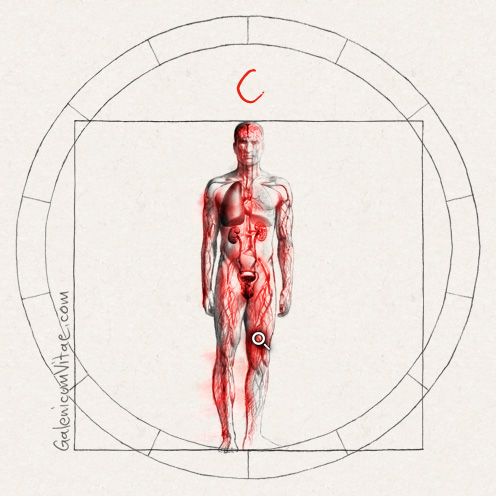Thrombosis is the obstruction of a blood vessel caused by a blood clot. If it affects the veins of the extremities, it is what is known as venous thrombosis.
Risk factors occur in middle age and it affects more women than men. The typical symptoms are manifested through pain or swelling in the calf or thigh, depending on where the clot is.
Prevention. Exercise every day for at least 30 minutes. Elevate the legs when on the couch and in bed, change positions often on long trips (especially by plane) and maintain a healthy diet.
Treatment. Doctors treat deep vein thrombosis (DVT) with medicines and other devices and therapies to prevent the clot from getting bigger, detaching and reaching the lungs, causing what is known as pulmonary embolism (PE), which is a serious complication.
Veins carry blood from the tissues to the heart. The blood flowing through the veins is under lower pressure and moves more slowly than blood flowing through the arteries. Consequently, blood is more likely to clot in the veins and block flow through them.
When a vein, artery or capillary is obstructed by a thrombus (blood clot) that has been dragged through the bloodstream, this is called thrombosis (venous or arterial according to the affected vessel).
Venous thrombosis can cause inflammation and pain in the leg where it forms. Large clots can also break off and travel to the lungs (pulmonary embolism). Arterial thrombosis may occur in the heart, which may cause a myocardial infarction, in the brain (stroke) or in the extremities (acute ischaemia).
Sites of thrombus formation are in the brain, heart, lungs, arteries, veins and capillaries, meaning that thrombosis may occur in any part of the circulatory system.
For more information visit:
Blood clots
http://www.nhs.uk/conditions/Thrombosis/Pages/Introduction.aspx
Causes of deep vein thrombosis (DVT)
http://www.nhs.uk/Conditions/Deep-vein-thrombosis/Pages/Causes.aspx

 Digestive
Digestive  Blood
Blood Cardiovascular
Cardiovascular Dermatology
Dermatology Genitourinary,
Genitourinary, Hormones
Hormones Infections
Infections Oncology and
Oncology and Musculo-skeletal
Musculo-skeletal Mental health and
Mental health and Parasites
Parasites Respiratory
Respiratory Senses
Senses Various
Various




